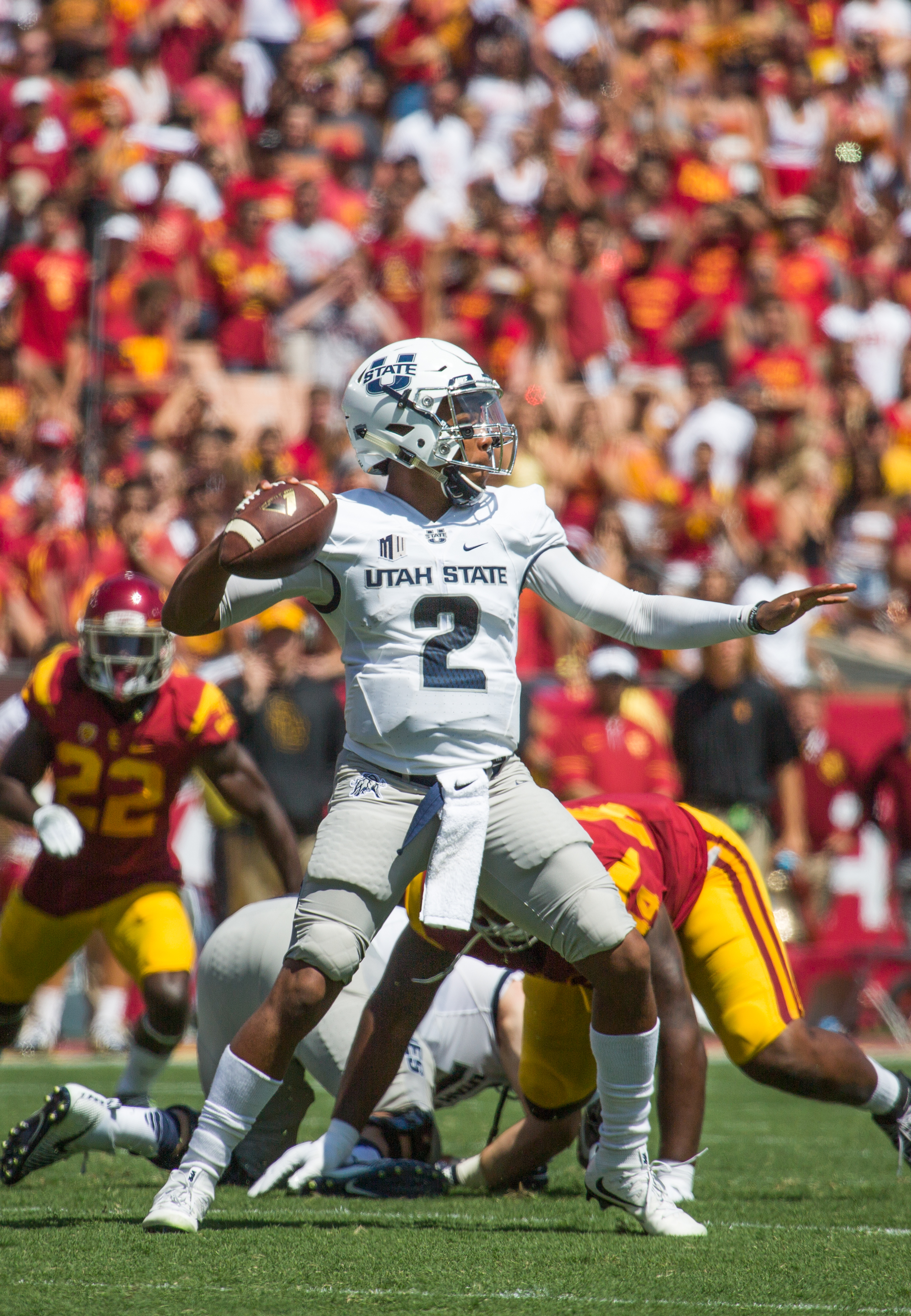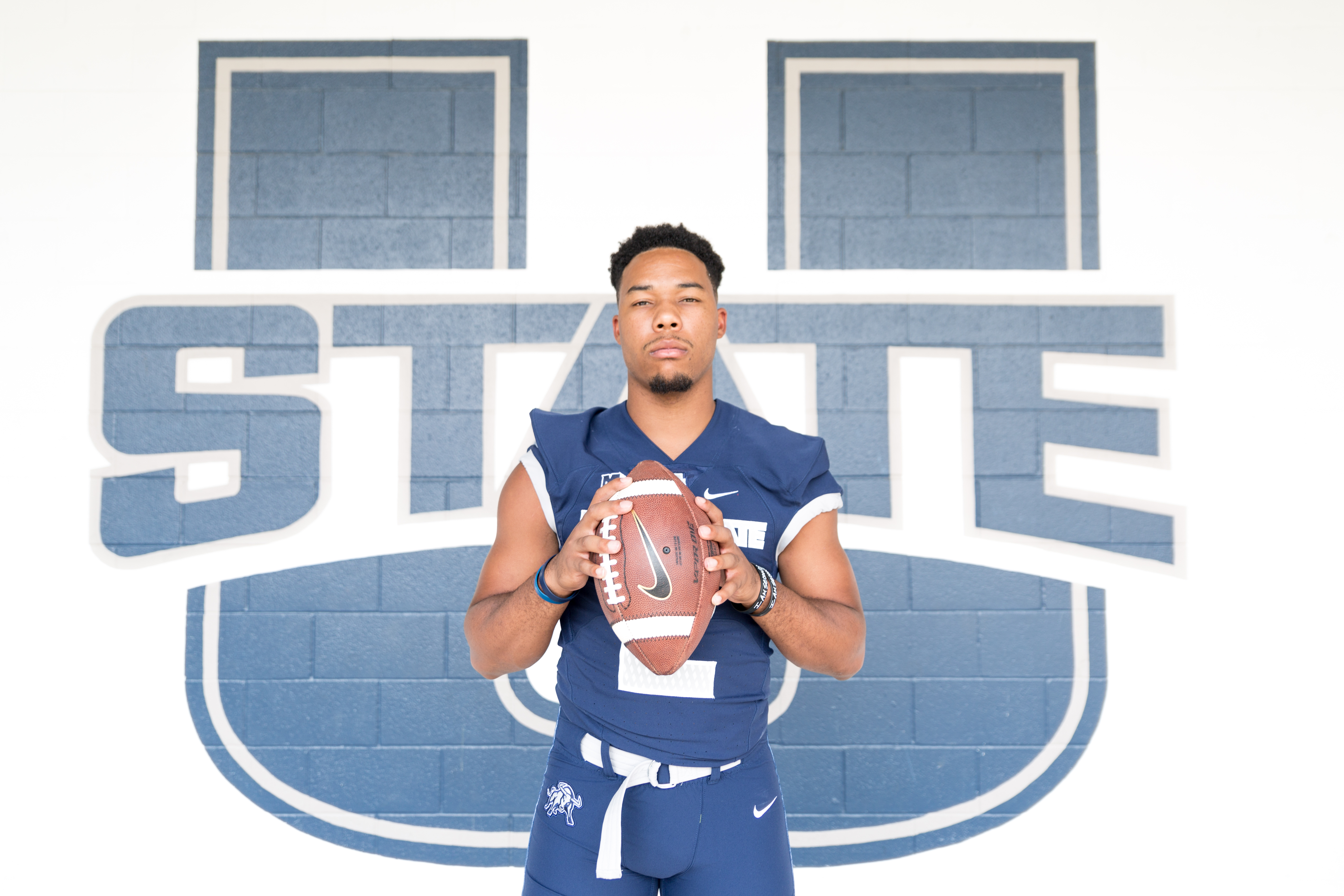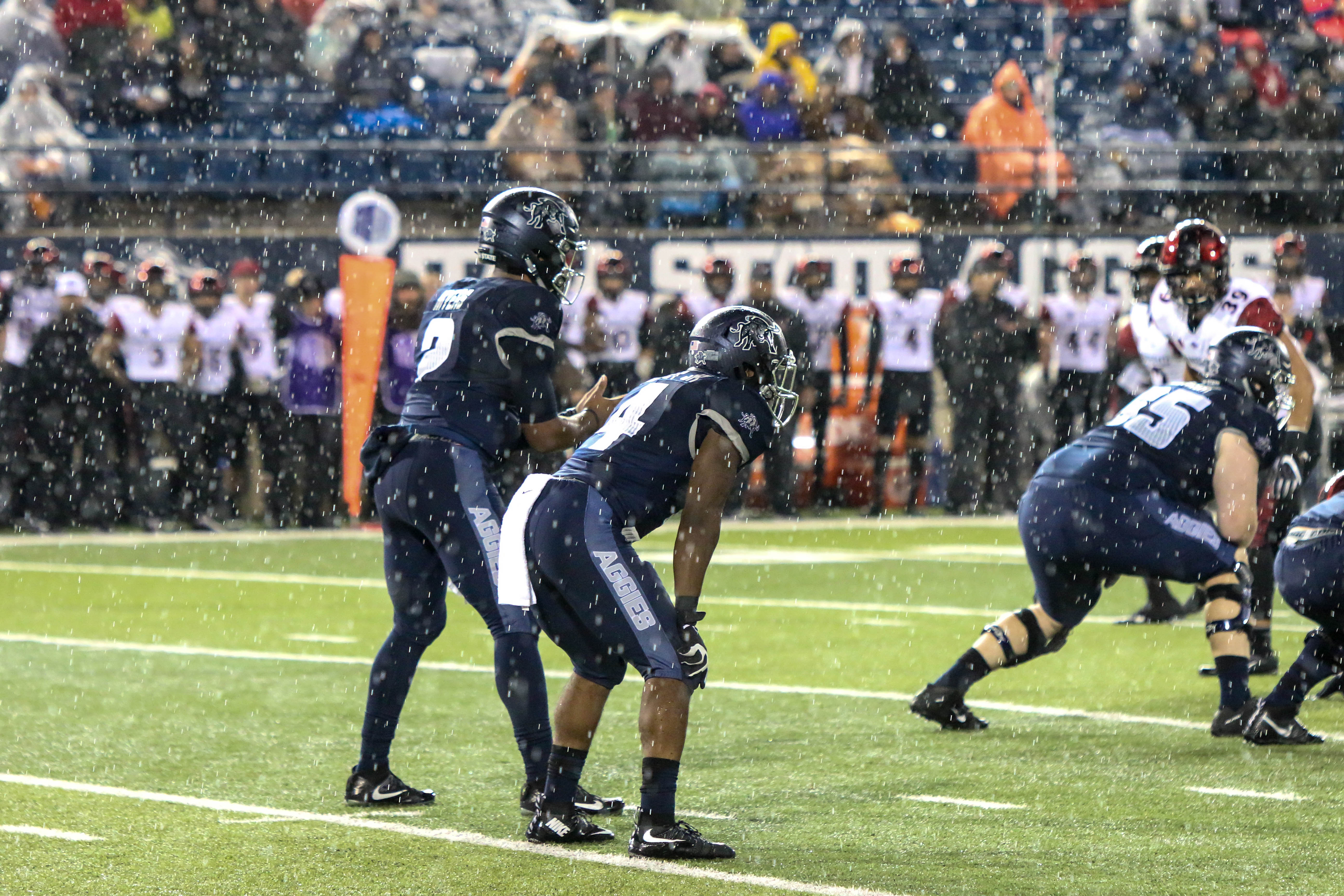Kent Myers: Take No. 2
A version of this story ran in the Utah State Football Preview magazine, produced by the Utah Statesman.
Kent Myers introduced himself to Utah State fans under the unlikeliest of circumstances. It was 2014, the fifth and final year of quarterback Chuckie Keeton’s legacy as the guy who seemed to do it all, when a rash of injuries tore through the Aggies’ best laid plans.
Keeton, who starred in Aggie football’s rise to national relevance with a historic 2012 campaign sparked by an overtime victory over Utah and sealed with a definitive 41-15 Idaho Bowl beatdown over Toledo, only made it three games into his final season. After previously shredding his knee against BYU in 2013, the knee gave out again — this time midway through a home contest against Wake Forest — leaving the offense in the hands of Darell Garretson.
Garretson managed to stay healthy through four games, but the cycle of twisted ligaments and broken bones continued in a nightmarish loss in Ft. Collins. Garretson snapped his throwing wrist, the Aggies floundered, and the starting job fell to third stringer Craig Harrison. Harrison’s season-ending knee injury came not even a full game later.
By the first week of November, the program had little choice but to call on an entirely untested true freshman. It was a road game in Hawai’i, four time zones away from his home team’s fans and their newly-acquired taste for gridiron success, that Kent Myers took his first snap as the team’s starter — 186 yards and three touchdowns later, Myers was a hero.
Suddenly it was the Texas native’s show. Myers’ outing in Hawai’i was near-perfect, and backed by a still-dominant defense the Aggies scrapped their way to four straight wins behind a fourth-string signal-caller. The dual-threat QB silenced any talk of merely being a decent placeholder with a 48-yard first quarter touchdown run in the New Mexico Bowl the same year, a go-ahead run that aided Utah State in its 21-6 victory over UTEP. It became clear the future of Utah State football wore the no. 2, and the recent streak of Aggie bowl wins appeared safe for seasons to come.
Nearly two years later, Myers cleaned out a locker after a joyless 2016 campaign, eager to leave an unsatisfying 3-9 record in the rearview.
“That’s why I said I’m excited for this year,” Myers said of his final season, “because how are we going to battle back from being 3-9? You don’t want to be 3-9 again. I’ve never been 3-9. That hurts.”

The chip on Myers’ shoulder is clear. Despite flashes of brilliance over the course of nearly three years at the helm of the Aggie offense, the senior’s reputation will probably only ever be as good as Utah State’s record. True, Myers isn’t without his flaws. A statistical regression from his sophomore season to a less-than-stellar junior year is undeniable — his completion percentage faltered, his total touchdown passes dipped from 16 to 10 and eight interceptions marked a career high. The drop in production owed something to the lack of continuity at the offensive coordinator position and a below-average offensive line, but even in what head coach Matt Wells terms the “ultimate team sport,” Myers knows it’s the quarterback that ultimately answers for the team’s successes — and failures.
Somewhat under the radar, 2016 also saw Myers shoulder significantly more of the offensive load, surpassing his sophomore season by nearly 1,000 passing yards and setting career highs in yards on the ground (449) and rushing touchdowns (six). Despite signs of Myers maturing into one of the more dangerous quarterbacks in the conference, the crushing nature of last season’s close losses seemed to eclipse any positive developments in his game.
“We won three games, but really we should’ve won at least four of them you know,” Myers said. “There were some close games that either we didn’t finish or we didn’t start fast enough. I really think if we dial down those mistakes — shoot, we would’ve won seven games and nobody would be talking about us being in last place.”
It’s tough to recall Myers leading a flawless eight play, 74-yard drive against Colorado State, or the equally impressive 60-yard scoring drive on the Aggies’ next possession. Myers’ ability to pick up on CSU’s disguised blitzes early gave the elusive senior ample opportunity to pick apart the Rams’ defense with quick passes to the sidelines, tucking it himself to complete the drives with a pair of nifty touchdown runs. No, those positives were buried under a second-half collapse that saw a rejuvenated CSU defense hold the Aggies’ final four possessions to two punts, a turnover on downs and an interception.
When Myers is on, he’s on. The senior still owns the lowest career interception rate of any quarterback in program history, with 31 touchdowns to his credit and just 14 interceptions in 679 passes. He’s the only Aggie quarterback in the modern era to rush for three touchdowns in a game, set the USU single-game record for rushing yards by a quarterback (191) and still holds the Mountain West single-game record for completion percentage (93.3 percent).

Kent Myers
But when the confident swagger of a guy who’s been staring down Division I defenses since the tender age of 19 fades, so too does the fleeting impression that he can single-handedly take over a game. Now, with just 12 games to prove “Myers mania” was no fluke, the senior is hungry for more than just a comeback season.
“For us to be successful, I know coach Wells always says it, our best players are going to have to play their best year,” Myers said.
The goal is the same it’s always been — compete for a Mountain West championship, win a bowl game. With a unanimous last-place preseason selection hanging over his head, Utah State’s starting quarterback still sees no reason to doubt his current squad of underdogs.
“I really don’t like to look into the past,” Myers said. “We were 3-9. I’m a 3-9 starting quarterback. Dallin [Leavitt] is a 3-9 starting safety. Coach Wells is a 3-9 head coach. I like to look at what we’re doing right now.”
What the Aggies are doing now includes trusting new offensive coordinator David Yost’s supercharged, ultra-efficient spread offense built on speed and fueled by savvy pre-snap adjustments — skills well within Myers’ wheelhouse. The team also welcomes back fully-healthy senior safety Dallin Leavitt, a deep secondary and offensive weapons Ron’Quavion Tarver and Dax Raymond boasting big-play potential. But the right personnel is only half the battle — the other half, Myers chalks up to something a little more intrinsic.
“It’s not all about talent, it’s about heart,” Myers said. “Coach Wells said last year when we were playing USC, ‘you have three hours. Who’s going to be the best team in those three hours?’”
Glaring mental weakness showed down the stretch in 2016, as the team appeared to lack all resolve in losses both at home to New Mexico and in Reno. The Aggies played not to lose, wilting under the weighty expectation to survive a gutted front seven and remain one of the conference’s premier defenses. For Leavitt, the undisputed vocal leader of USU’s stacked secondary, the underdog role is nothing new.
“It pisses me off. Really. It’s disrespect,” Leavitt said. “People think we’ll only win 3-4 games or whatever they said. Last place basically. I mean I understand where they’re coming from, but it’s disrespect. I think we’ve got something to prove.”

For Utah State to rebound as a program back to the days of bowl wins and Mountain West title contention, it’ll take the best Myers has to offer. Better pocket awareness, more guts to try the deep ball and an emphasis on his dynamic dual-threat abilities feels like a tall order. By season’s end, Myers will clean out his locker for the last time, his final game as a college quarterback in the rearview — only this time, he’ll be satisfied.
“We have nothing to lose,” Myers said. “They already think we’re gonna get last place, only win three or four games. But we have something to show ‘em this year.”

